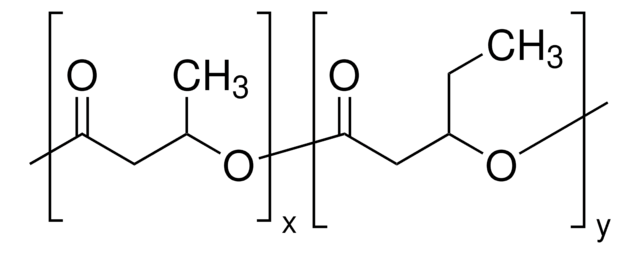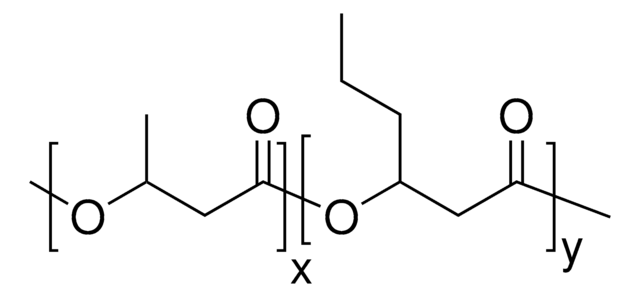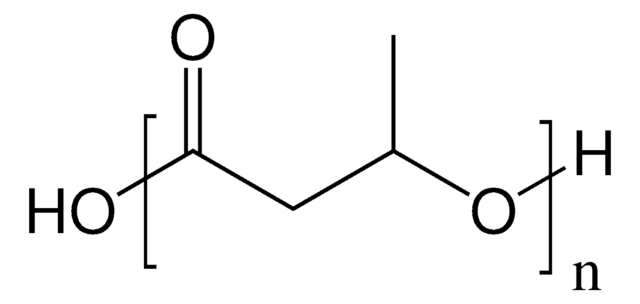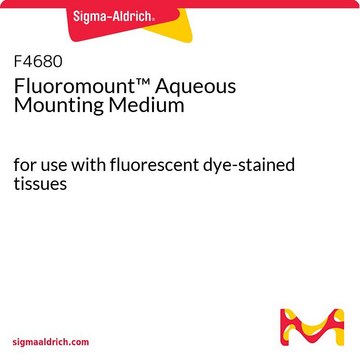403121
Poly(3-hydroxybutyric acid-co-3-hydroxyvaleric acid)
natural origin, PHV content 12 mol %
Synonym(s):
PHBV
Sign Into View Organizational & Contract Pricing
All Photos(1)
About This Item
Linear Formula:
[COCH2CH(CH3)O]m[COCH2CH(C2H5)O]n
CAS Number:
MDL number:
UNSPSC Code:
12162002
PubChem Substance ID:
NACRES:
NA.23
Recommended Products
description
12 mol% is approximately 14 wt%
optical activity
[α]20/D +11.8°, c = 0.1 in chloroform
composition
PHV content, 12 mol %
SMILES string
CC(O)CC(O)=O.CCC(O)CC(O)=O
InChI
1S/C5H10O3.C4H8O3/c1-2-4(6)3-5(7)8;1-3(5)2-4(6)7/h4,6H,2-3H2,1H3,(H,7,8);3,5H,2H2,1H3,(H,6,7)
InChI key
IUPHTVOTTBREAV-UHFFFAOYSA-N
Looking for similar products? Visit Product Comparison Guide
General description
Poly(3-hydroxybutyric acid-co-3-hydroxyvaleric acid) is a biocompatible and biodegradable polymer which is produced naturally by a number of microorganisms.
Application
PHBV based foam matrix may be used to produce tissue engineered bone. It was used as a standard for calibration in another study which focused on the effect of fatty acids on PHA producing microorganism communities.
Features and Benefits
Biodegradable polymer
Preparation Note
Produced via a controlled fermentation process using microoroganisms.
Storage Class Code
11 - Combustible Solids
WGK
WGK 3
Flash Point(F)
Not applicable
Flash Point(C)
Not applicable
Personal Protective Equipment
dust mask type N95 (US), Eyeshields, Gloves
Choose from one of the most recent versions:
Already Own This Product?
Find documentation for the products that you have recently purchased in the Document Library.
Poly (3-hydroxybutyric acid-co-3-hydroxyvaleric acid) based tissue engineering matrices.
Kose G T, et al.
Journal of Materials Science. Materials in Medicine, 14(2), 121-126 (2003)
Volatile fatty acids influence on the structure of microbial communities producing PHAs.
Ciesielski S and Przybylek G
Brazilian Journal of Microbiology, 45(2), 395-402 (2014)
Our team of scientists has experience in all areas of research including Life Science, Material Science, Chemical Synthesis, Chromatography, Analytical and many others.
Contact Technical Service
![Poly[(R)-3-hydroxybutyric acid] natural origin](/deepweb/assets/sigmaaldrich/product/structures/129/476/7d1c924b-f644-4889-a2d6-d7a923ce382c/640/7d1c924b-f644-4889-a2d6-d7a923ce382c.png)






